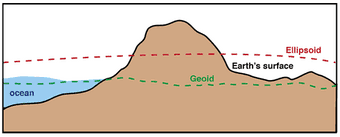Japan, a nation synonymous with earthquakes, is once again under global scrutiny as it braces for the possibility of a mega earthquake following a recent official warning. Seismologists have alerted the public to the potential for a massive quake, reminding the world of Japan's tumultuous relationship with the shifting tectonic plates beneath its islands. With its extensive experience in geotechnical investigations and seismic analysis, Japan's engineering services are well-equipped to understand and address these seismic threats. Although Japan has lifted its warning about a potential megaquake, we consider important (and interesting, at least for engineers) to grasp the significance of such a warning. To fully grasp the significance of this warning, we need to explore Japan’s historical context with earthquakes, the underlying reasons for their frequency, and why this particular event carries a heightened sense of urgency.
If the reader is new to the topic of earthquakes, this article will provide a useful introduction about earthquakes, their magnitude and intensity.
The Geological Context: Why So Many Earthquakes?
Japan sits at the intersection of four major tectonic plates: the Pacific Plate, the Philippine Sea Plate, the Eurasian Plate, and the North American Plate. This unique and complex positioning places Japan within the Pacific Ring of Fire, a seismically active zone that experiences around 90% of the world’s earthquakes. As these tectonic plates shift and grind against one another, immense stress builds up until it is released in the form of an earthquake.
The subduction zones, where one plate is forced under another, play a particularly critical role in Japan’s seismic activity. Along the Japan Trench, for instance, the Pacific Plate is being subducted beneath the North American Plate. This process generates significant seismic energy and is a constant source of earthquake threats. The Nankai Trough, located off the southern coast of Japan, is another subduction zone that has historically triggered some of the most powerful earthquakes the nation has ever experienced.
A History of Devastating Earthquakes
Japan's relationship with earthquakes has been shaped by many catastrophic events, some of which have had lasting impacts on its society and infrastructure.
The Great Kanto Earthquake (1923): This 7.9 magnitude earthquake devastated the Kanto region, particularly Tokyo and Yokohama. It claimed over 140,000 lives, making it one of Japan's deadliest natural disasters. The quake led to widespread fires that consumed much of Tokyo, and the aftermath saw significant reconstruction efforts that changed the landscape of the city.
The Kobe Earthquake (1995): Known officially as the Great Hanshin-Awaji Earthquake, this 6.9 magnitude quake struck the city of Kobe and surrounding areas. Over 6,400 people lost their lives, and the disaster underscored vulnerabilities in Japan's urban infrastructure, leading to reforms in building codes and disaster preparedness.
The Tohoku Earthquake and Tsunami (2011): Perhaps the most globally recognized event, the 9.0 magnitude Tohoku earthquake triggered a massive tsunami, which caused widespread devastation along the northeastern coast of Japan. The event claimed over 15,000 lives and led to the Fukushima Daiichi nuclear disaster. This earthquake was a wake-up call for the world about the potential for large-scale seismic events and their cascading effects on other systems, like nuclear power plants.
These historical earthquakes have not only reshaped Japan physically but have also played a role in shaping its policies, infrastructure, and public awareness. The country's rigorous building standards and early warning systems are direct responses to the lessons learned from past quakes.
The Recent Mega Earthquake Warning: What Makes This One Special?
The latest warning comes with a sense of heightened urgency due to the growing signs of seismic activity in regions prone to larger-than-usual earthquakes, such as the Nankai Trough and the Japan Trench. Seismologists have been closely monitoring these areas for years, as the historical record indicates that they are overdue for a major seismic event.
The "mega" designation refers to earthquakes that reach magnitudes of 8.0 or higher. These quakes are rare but extremely destructive. The primary concern revolves around the Nankai Trough, which has a well-documented history of producing massive earthquakes every 100 to 150 years. The last mega earthquake in this area occurred in 1946, with a magnitude of 8.1. As the timeline approaches the critical threshold, experts are becoming increasingly concerned that the next big one could strike at any moment.
Some of the key concerns about this potential mega earthquake include:
Magnitude and Duration: Mega earthquakes are not just powerful; they also tend to last longer. A quake in the Nankai Trough could last for several minutes, significantly increasing the damage potential. The shaking could trigger landslides, collapse buildings, and rupture infrastructure over a wide area.
Tsunami Risk: The Nankai Trough and other subduction zones off Japan’s coast have a history of triggering tsunamis. The Tohoku earthquake of 2011 demonstrated how devastating these tsunamis can be, and the proximity of the Nankai Trough to Japan’s densely populated southern coast raises serious concerns. Tsunami waves could reach the coastline within minutes, leaving little time for evacuation despite Japan's advanced warning systems.
Aftershocks and Secondary Disasters: Mega earthquakes often trigger a series of aftershocks, which can be almost as damaging as the main quake. Additionally, secondary disasters, such as fires, infrastructure failures, and disruptions to transportation and supply chains, could compound the damage and make recovery efforts more difficult.
Japan Preparedness and Mitigation Efforts For Earthquakes
Japan has long been a global leader in earthquake preparedness and mitigation. The lessons learned from past disasters have driven innovation in various sectors, particularly in construction, disaster response, and early warning systems. Here are some of the measures Japan has in place to mitigate the impact of earthquakes:
Building Codes and Infrastructure: Japan’s building codes are some of the strictest in the world, requiring structures to be designed to withstand strong seismic forces. After the Kobe earthquake in 1995, there was a renewed focus on retrofitting older buildings and improving the earthquake resilience of new construction.
Early Warning Systems: Japan’s earthquake early warning (EEW) system is one of the most advanced in the world. It uses a network of seismometers and other sensors to detect the first signs of an earthquake and send out alerts before the shaking begins. These warnings give people precious seconds to take cover or evacuate, and they can also trigger automated systems to shut down trains, power plants, and other critical infrastructure.
Public Education and Drills: Earthquake drills are a regular part of life in Japan, and public education campaigns ensure that people know how to respond when an earthquake strikes. Schools, businesses, and communities regularly participate in these drills, which simulate real earthquake conditions and teach people how to protect themselves.
Tsunami Preparedness: In coastal areas, tsunami evacuation routes and shelters are well-marked, and communities are trained in how to quickly move to higher ground in the event of a tsunami warning. Japan has also invested in coastal defenses, such as sea walls and breakwaters, although these can only provide limited protection against large tsunamis.
Despite these efforts, the scale of a potential mega earthquake raises concerns that even Japan’s advanced systems may be tested to their limits. The sheer force of such an event, combined with the challenges of responding to secondary disasters, means that the coming quake could have far-reaching consequences.
Global Implications
Japan's earthquake warning is not just a local issue; it has global implications. Japan is the third-largest economy in the world, and its industries play a vital role in global supply chains, particularly in electronics, automotive manufacturing, and technology. A major earthquake could disrupt these supply chains, leading to shortages and economic instability that ripple across the globe.
Additionally, the Fukushima disaster in 2011 highlighted the potential for earthquakes to trigger nuclear incidents. Japan still relies on nuclear power for a significant portion of its energy needs, and many of its reactors are located in areas that could be affected by a mega earthquake. The potential for another nuclear disaster remains a serious concern, not just for Japan but for the world.
What Can Be Done About Earthquakes?
While no one can prevent earthquakes from happening, continued investment in preparedness, mitigation, and resilience is critical. The Japanese government, in collaboration with international experts, continues to refine its strategies for dealing with large earthquakes. This includes ongoing research into earthquake prediction, improving early warning systems, and developing new technologies for disaster response and recovery.
On an individual level, people living in earthquake-prone areas are encouraged to make their homes earthquake-resistant, create emergency kits, and have evacuation plans in place. Community engagement and education remain key to ensuring that people are prepared to act quickly and effectively when an earthquake strikes.
In light of these challenges, Japan engineering firms specializing in geotechnical services and seismic analysis, are more important than ever in helping both public and private sectors enhance their resilience against seismic threats. With expertise in geotechnical surveys and earthquake risk assessments, these services are vital in ensuring that infrastructure can withstand the forces of nature.
Summarizing the Japan Mega Earthquake
Japan's mega earthquake warning is a stark reminder of the power of nature and the importance of preparedness in the face of inevitable seismic events. With its history of devastating earthquakes, Japan has become a global leader in earthquake resilience, but even the most prepared nation must remain vigilant in the face of such a formidable threat.
As the world watches and waits, Japan continues to prepare for the next big earthquake, knowing that the lessons of the past will be crucial in shaping the response to the future. Whether or not this predicted mega earthquake strikes in the near term, the vigilance, innovation, and resilience of the Japanese people stand as a testament to their ability to face the challenges of living in one of the most seismically active regions on Earth.














